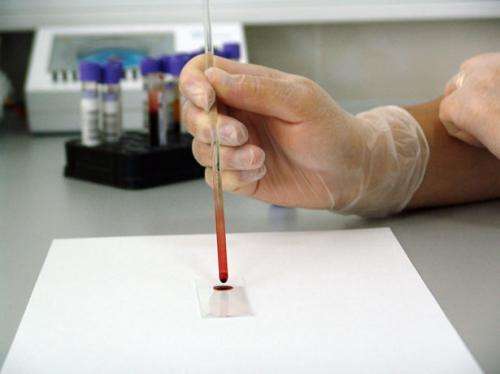현재 위치:홈 > 뉴스현황 > Press Events > Team Discovers How B...
저자: 업로드:2017-08-24 조회수:
Humans are normally born with a highly sophisticated array of molecules that act as "sentries," constantly scanning our bodies for injuries such as cuts and bruises.
Researchers in the Boston
Children's Program in Cellular and Molecular Medicine and the Harvard Medical
School department of biological chemistry and molecular pharmacology have shown
how the von Willebrand factor (VWF), which plays a critical role in our
body's ability to stop bleeding, does its job.
Fluorescence imaging and
microfluidic tools, developed by the team, allowed them to capture images of
individual VWF molecules on camera while manipulating the molecules with
life-like mechanical forces emulating natural blood flow. The team's findings
("Flow-Induced Elongation of von Willebrand Factor Precedes
Tension-Dependent Activation"), published in Nature Communications, reveal that VWF
undergoes a two-step, shapeshifting transformation to activate blood clotting.
This transformation is triggered when VWF senses certain changes in blood flow
that are indicative of injury.
"Under normal circumstances, VWF molecules are compact and globular in shape," says Hongxia Fu, Ph.D., a researcher in the lab of Timothy Springer, Ph.D., of Boston Children's Hospital and Harvard Medical School (HMS) and co-first author on the paper. "But we found that when blood flow rate increases, VWF rapidly elongates, stretching out more and more in response to higher shear stress."

However, elongating is not
sufficient on its own to activate blood clotting. To safeguard against
unnecessary—and potentially life threatening—blood clots, it's only when the
tensile forces generated in the elongated VWF hit critical levels that the
shapeshifter's transformation becomes complete.
The tensile forces activate
“sticky" sites along VWF, allowing it to adhere to circulating platelets,
the cells that work in conjunction with VWF to clump up and stop blood
loss.
Normally, the rush of blood
needed to reach these critically high tensile forces can only occur at sites of
injury inside blood vessels. This specificity enables VWF to sense blood loss
and activate rapidly and locally, without activating elsewhere in the
body.
"If you can imagine stretching out your arms, and then opening your hands to capture platelets, that's basically what we are seeing VWF do in response to bleeding," says r